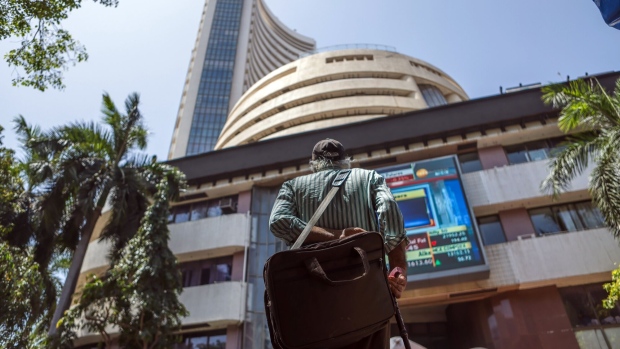Apr 9, 2024
Exotic Corporate Debt Products Lure Yield-Hungry Indian Savers
, Bloomberg News

(Bloomberg) -- Follow Bloomberg India on WhatsApp for exclusive content and analysis on what billionaires, businesses and markets are doing. Sign up here.
Some individual investors in India are exploring a nascent segment of the nation’s credit market in pursuit of higher returns.
They’re delving into debt backed by cash flow from bonds issued by the country’s mid-sized firms. Private credit firm Vivriti Asset Management Pvt. says sales of securitized debt instruments, or SDIs, are on the rise.
“Investor appetite for bonds rated below AA has increased significantly” and SDIs provide access to a pool of high-yield debt via a single investment, said Ajay Kejriwal, head of trading desk at Vivriti, which had more than 27.5 billion rupees ($330 million) in assets at end of March.
Vivriti recently sold about 200 million rupees of its local-currency bond holdings to Credence Family Office, which then packaged it into a SDI. The product received a strong response from investors, Chanchal Agarwal, chief investment and strategy officer at Credence, said in an interview.
The growing popularity of such securities may open a new source of funding for India’s small- and mid-sized firms, who often face challenges in accessing capital. For investors, it presents an opportunity for higher returns — Credence aims to give investors an annualized yield of 11% to 12% on the securitized debt which matures in about two years, Agarwal said.
That exceeds the 7% return from a similar maturing term deposit at State Bank of India, the nation’s largest state-owned lender.
Investors have also been drawn to the product as it provides exposure to the debt of smaller firms, which are expected to gain more from India’s robust economic expansion compared to larger companies. With growth reaching almost 8% in the fiscal year that ended in March, the nation stands as the fastest-expanding major economy in the world.
Read more: Booming India Prepares to Take China’s Global Growth Crown
Still, SDIs account for a sliver of India’s credit market. Companies raised about 2.5 billion rupees from 18 issuances in the past couple of years, ICRA Ratings said in a February report. Of these, only 14% were backed by bond cash flows.
To be clear, the attractive yield may come with a downside if the product is sold to a section of investors who may not fully understand the risks. India has faced credit crises before, including an instance where once AAA-rated infrastructure financier collapsed in 2018, roiling the broader market.
Credence set the minimum investment amount for the security at 1 million rupees, targeting wealthier and more sophisticated individuals rather than small savers, according to Agarwal.
“Elevated interest rates and changes in indexation benefit on debt mutual funds has accelerated development of alternate debt markets,” Vivriti’s Kejriwal said. “That has led investors to consider fixed income for wealth creation, beyond just wealth preservation.”
©2024 Bloomberg L.P.






